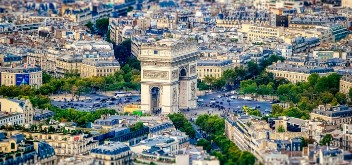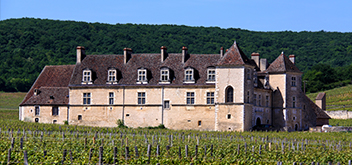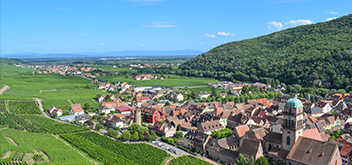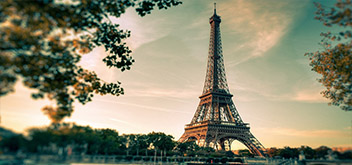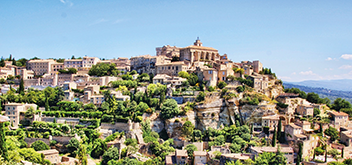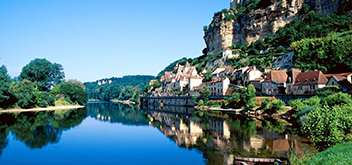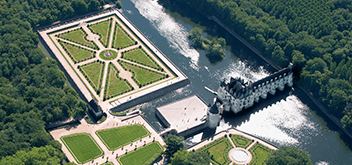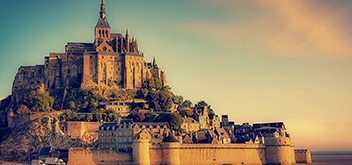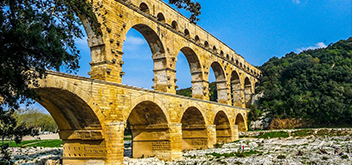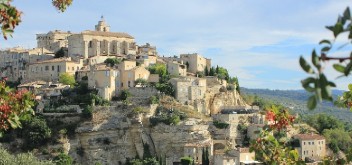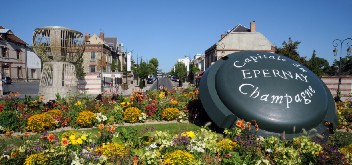No products
Geography
Provence stretches from the river Rhône (natural frontier on the west with Languedoc) to Italy on the east, and from the Mont Ventoux in the North to the Mediterranean coast, including the dramatic landscape of Camargue and the historical city of Marseille.
It has varied topographical features, ranging from fertile plains in the Rhône valley to mountains in the east, as well as lush river valleys, like the one of the Durance. Among the breathtaking mountainous landscape of the pre-Alps and the charming villages, flows the many rivers which cut into limestone to form gorges. The most famous being the outstanding Verdon gorges in Haute Provence.
Provence coastal scenery is not to be missed; the Calanques close to Marseille offers beautiful bays with sculpted limestone cliffs that a Provence tour should not miss.
On the border alluvial plains like the Camargue were the distinction between land and sea is often blurred, and some of its wildlife resembles that of an African environment
The climate of Provence is typically Mediterranean, warm and dry. However, the legendary Mistral is a strong, cold wind from the north that comes mostly in the winter and spring. The higher regions of Provence get snow in winter. Summer temperatures can be as high as 44°C (111.2°F).
The Camargue
The Camargue Regional Nature Park, created in 1970, covers 100,000 ha of land in three towns, Arles, Les Saintes-Mariesde-la-Mer and Port-Saint-Louis-du-Rhône, with a Park population of 10,000 inhabitants. Its main mission is to conciliate the development of human activities and nature conservation. To discover all of the different Camargue landscapes, you would go from the vineyards in the north to the beaches in the south, through the “sansouires” (saltwort plains) and the salt marshes, go in search of the emblematic Camargue animals, pink flamingos, bulls and Camargue horses.
The Mont Ventoux
Classified by UNESCO as a Biosphere Reserve, the Mount Ventoux is home to over 1,250 species of flora, 120 species of birds and a wide range of animals and insects. It offers visitors many opportunities to enjoy nature: in winter alpine and Nordic skiing, snowboarding, tobogganing, kindergarten with the treadmill, in a protected area. And summer for hiking trails, mountain biking, go-karting, grass scooter, grass skiing, horseback riding, pony, donkey or carriage.
The Calanques
The Calanques, these emeralds fingers between the rocks, were created 12 000 years ago when a gradual warming after the ice ages made the sea rise to flood the valleys.
The sunny, windy and dry climate gave life to very diverse plants, and some rare and fragile species that are protected today. Man, in the past centuries, let herds of goats graze here and built pens and lime kilns, of which the ruins can still be seen.
Today, those Calanques extended from Marseille to Cassis; they represent a long stretch of coastline indented by a series of narrow inlets walled by limestone cliffs. The Calanques stand for a delightful hike on 20km of marked trails. This classified site extending over 4000 hectares is worth the visit during your Provence tour. Magical and enchanting coves are a paradise for scuba diving, climbing, discovery of the fauna and flora ...
The tourists today are attracted by the narrow bays of fine white sand met by warm cobalt shallows, surrounded by towering pale grey cliffs bearing sparse, precariously sited trees.
Despite its rugged location, the beaches are well accessible. However, to avoid peak season crowds and the strong Mistral wind of spring and winter, visit in June or September, morning or evening to avoid the strong heat of the afternoon.
The Ochre trails of Roussillon
Ochre has become the cornerstone of Roussillon's thriving tourist industry. Today it's the second most popular village in the Luberon after Gordes, beguiling visitors on a Provence tour, thanks to its vivid colors. The ochre of the Luberon fascinates, the former ochre quarries of the Apt valley (Vaucluse) surge from the past, hiking trails have been blazed and panoramic viewpoints opened up. Sculpted by storms, this former ochre deposit today present enchanting scenery which combine men and nature work. Cliffs, earth pillars, ochre-colored sand hillocks, after being dug out by shovels and picks, are henceforth shaped by the winds and rain.
The Verdon Gorges
Although nothing in Europe can match Arizona's Grand Canyon, the Verdon Gorges are nonetheless spectacular. Over countless years, the Verdon River, a tributary of the Durance, has cut a deep, clean gorge into the limestone plateau, with narrow cliffs plunging 2300ft (700m) amid wild scenery. The Verdon derives its name from its jade green waters which add to the beauty.
Both the northern and southern edges of the gorge may be followed by car. The Corniche Sublime (D71) was hewn from the rock on the south side in 1947. On the other side, the D952 offers many vantage points, but the best one is generally acknowledged to be at L'Escalès. A footpath, named after explorer Edouard-Alfred Martel, should only be attempted by the hardy and well-prepared, but offers stupendous views.

